Kathmandu Drubar Square, Hanuman Dhoka
- Kathmandu, Asan
- Kathmandu, Indra Chowk
- Kathmandu, Indra Chowk Bead Market
- Kathmandu, JanBahal Chowk
- Kathmandu, JanaBahal Pottery shops
- Kathmandu, Yetkha
- Kathmandu, Naradevi
- Kathmandu, ItumBahal Chowk
- Kathmandu, Kichandra Bahal
- Kathmandu, Bijeswori
- Kathmandu, Babar Mahal Main
- Kathmandu, Babar Mahal Inner
- Kathmandu,Kathesimbu
- Kathmandu, Rani Pokhari
- Kathmandu, Dharahara
- Kathmandu, Royal Palace Street
- Kathmandu, Bhimsenthan
- Kathmandu, Garden Of Dreams
- Kathmandu, Garden of Dreams North View
- Kathmandu, Thamel
- Kathmandu, National Museum
- Kathmandu, Inside National Museum
- Kathmandu, From the Roof of National Museum
- Kathmandu, Swayambhu
- Kathmandu, Swayambhu Back Side
- Kathmandu, Three Statue
- Kathmandu Durbar Square
- Kathmandu Drubar Square, Basantapur
- Kathmandu Drubar Square, Kumari Ghar
- Kathmandu Drubar Square, Kasthamandap
- Kathmandu Drubar Square, Taleju
- Patan, KumbheShwore
The inner palace complex of the Hanuman Dhoka was originally founded during the Licchavi period, but as it stands today most of it was constructed by King Pratap Malla in the 17th century. The royal palace was renovated many times in later years. The oldest parts are the smaller Sundari Chowk and Mohan Chowk at the northern part of the palace. The complex originally housed 35 courtyards and spread as far as New Rd but the 1034 earthquake reduced the palace to today’: 10 chowks (courtyards). Cameras are allowed only in the courtyards, not inside the building of the complex. Hanuman’s very brave assistance to the noble Rama during the exciting events of the Ramayana has led to the monkey god’s appearance guarding many important ent rances. Here, doaked in red and sheltered by an umbrella, a Hanuman statue marks the dhoka (entrance) to the Hanuman Dhoka and has even given the palace its name. The statue dates from 1672 and the god’s face has long disappeared under The statue dates from 1672 and the god’s face has long disappeared under a coating of orange paste applied by generations of faithful visitors. Standards bearing the double-triangle flag of Nepal flank the statue, while on each side of the palace gate are stone lions, one ridden by Shiva, the other by his wife Parvati. Above the gate a brightly painted niche is illustrated with a central figure of a ferocious Tantric version of Krishna. On the left side is the gentler Hindu Krishna in his traditional blue colour accompanied by two of his comely gopi (milkmaids). On the other side are King Pratap Malta and his queen.

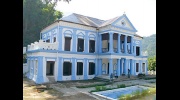
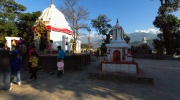
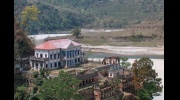
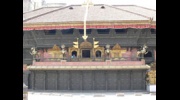
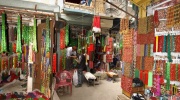
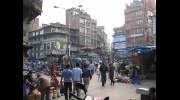
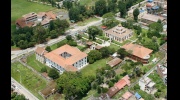
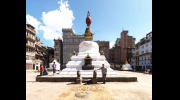
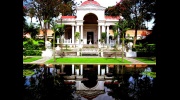
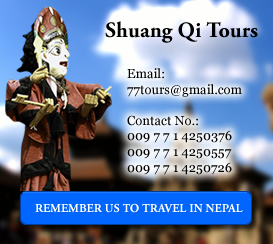
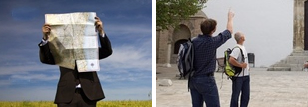






There is no comment yet for this virtual tour.
Be the first one to comment in this virtual tour »